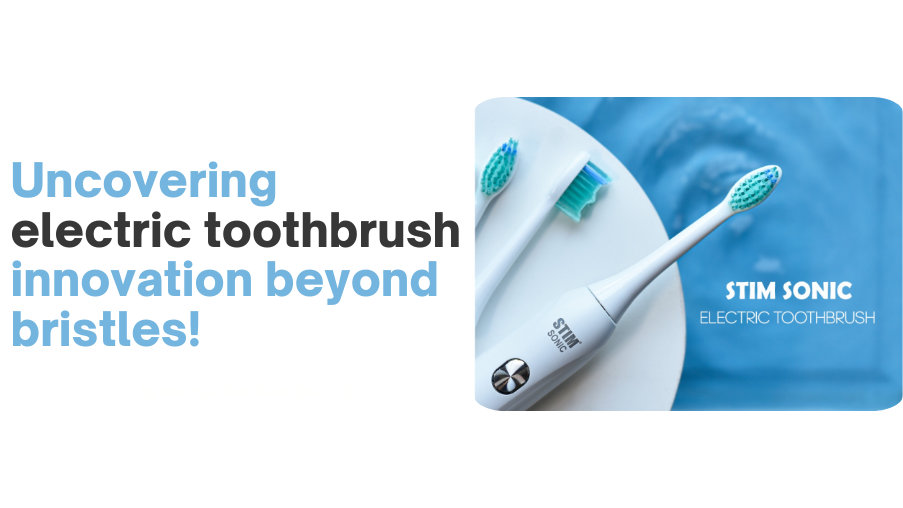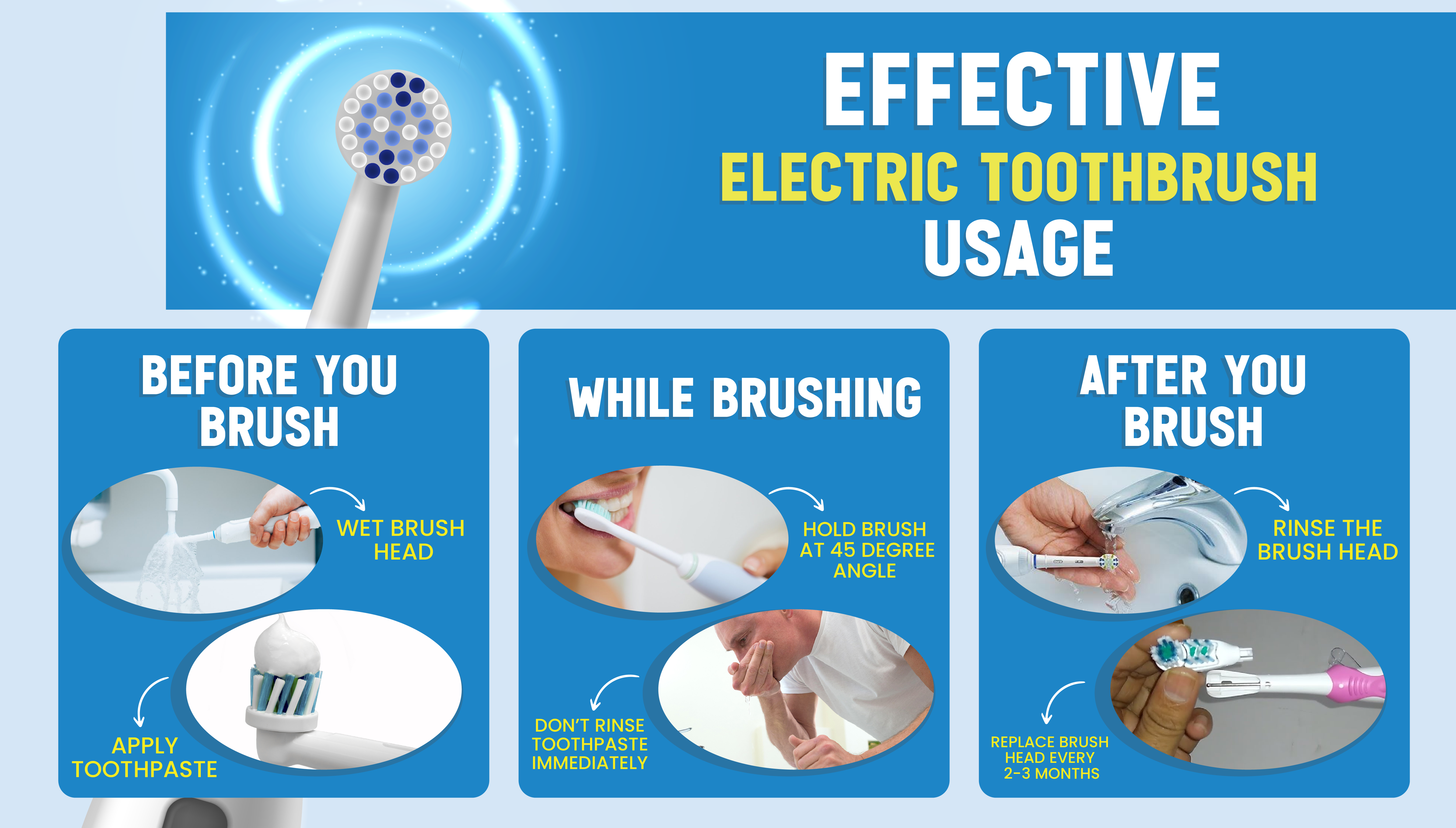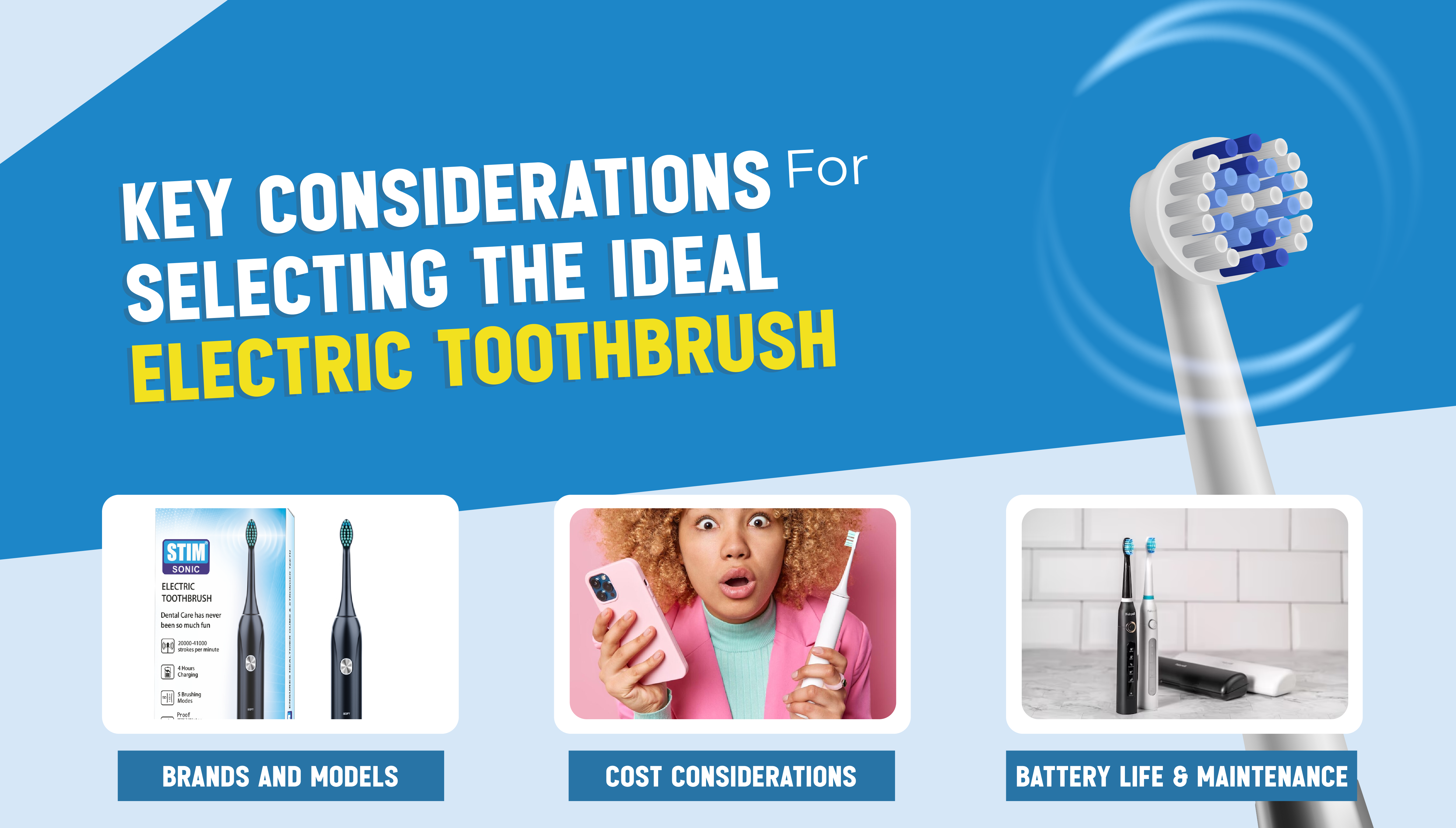
Stim Brush | 25 Dec, 2023
Explore the Future of Oral Care with Electric Toothbrush
While the trusty manual toothbrush has served us well for centuries, the dental care landscape is evolving. Electric toothbrushes have emerged as powerful allies in achieving optimal oral health, harnessing the latest advancements to deliver a superior cleaning experience. Join us on a journey to explore the high-tech world of Stim electric toothbrushes, where innovation meets dazzling results.
Table of Contents:
► Benefits of Stim Electric Toothbrushes ► Transition to Electric Toothbrushes ► Factors to Consider While Choosing the Right Electric Toothbrush ► Features of Electric Toothbrush ► Tips for Optimal Electric Toothbrush Use ► FAQs
Benefits of Stim Electric Toothbrushes
- Superior Plaque Removal
One of the standout advantages of Stim Electric Toothbrushes is their ability to remove plaque more effectively than traditional brushes. The high-speed sonic vibrations ensure a thorough clean.
- Built-in Timer
STIM Sonic Electric Toothbrush comes equipped with a built-in timer and 30-second reminder, ensuring that users brush for the recommended time. This feature takes the guesswork out of oral care, promoting consistency and effectiveness.
- Gentle on Gums
For decades, the misconception that electric toothbrushes were harsh on gums persisted. However, advancements in technology have paved the way for a new era of oral care, where effectiveness and comfort coexist harmoniously. The STIM Sonic Electric Toothbrush embodies this shift, offering a gentle yet powerful cleaning experience that caters to even the most sensitive gums.
Explore the Advanced Stim Toothbrush Collections!
Transition to Electric Toothbrushes
Making the transition to electric toothbrushes marks a pivotal shift in oral care. Traditional manual brushes have long been stalwarts in dental hygiene, but the allure of electric counterparts lies in their advanced features. The transition promises a more efficient cleaning process, with sonic vibrations tackling plaque in ways manual brushing cannot.
Detailed guide for teeth brushing way
Factors to Consider While Choosing the Right Electric Toothbrush
Selecting the right electric toothbrush involves considering factors such as brushing modes, battery life, and additional features. Understanding individual preferences and dental needs is crucial in making an informed decision.
- Brush head type:
Rotating, oscillating, or sonic? Rotating heads spin in circles, oscillating heads move side-to-side, and sonic brushes vibrate at high frequencies. Sonic brushes have an upper edge as they offer more vibrations per minute.
- Brush head size and shape:
Choose a size that fits comfortably in your mouth and reaches all areas, especially smaller heads.
- Brushing modes:
Look for multiple modes to adapt to different needs.
Additional Factors
- Replacement brush heads:
Check the availability and cost of replacement heads for your chosen brush model.
- Consult your dentist:
They can recommend specific features or brush types based on your individual oral health needs.
Know How to Perfect Your Teeth Brushing Art
Features of Electric Toothbrush
- Built-in timer: Helps you reach the dentist-recommended two minutes of brushing.
- Battery life: Choose a brush with a long battery life, especially if you travel frequently or forget to charge regularly.

Tips for Optimal Electric Toothbrush Use
> Before you brush:
- Wet the brush head: This helps activate the bristles and make them glide smoothly over your teeth.
- Apply a pea-sized amount of toothpaste: Don't overdo it, as the brush will do most of the work.
> While brushing:
- Use a gentle touch: Let the brush do the work for you. Applying too much pressure can irritate your gums and damage your teeth.
- Hold the brush at a 45-degree angle: This allows the bristles to reach the gum line, where plaque and bacteria build-up.
- Brush in small circles: Focus on one or two teeth at a time, and move the brush slowly and deliberately.
- Brush all surfaces of your teeth: This includes the front, back, and chewing surfaces.
- Follow the two-minute rule: Most dentists recommend brushing for two minutes twice a day. Many electric toothbrushes have built-in timers to help you stay on track.
- Don't rinse immediately: Spit out the toothpaste, but don't rinse your mouth with water. This allows the fluoride in the toothpaste to stay on your teeth and continue working.
Buy Stim Fluoride Ri Namel Toothpaste
> After you brush:
- Rinse your brush head: This removes any remaining toothpaste or food particles.
- Store your brush upright in a cool, dry place: This helps prevent the growth of bacteria.
- Replace your brush head every 2-3 months: Worn bristles are less effective at removing plaque and bacteria.
> Additional tips:
- Use a tongue scraper: This tongue cleaner helps remove bacteria from your tongue, which can improve your breath.
- Interdental: Interdental Brush removes plaque and bacteria from between your teeth, where your toothbrush can't reach.
- See your dentist regularly: For professional cleanings and checkups.
Featured review of long-term Electric Toothbrush clean performer
FAQs
Q. Are electric toothbrushes suitable for individuals with sensitive gums?
A. Yes, STIM electric toothbrush models are designed with soft bristles and adjustable settings, making them gentle on sensitive gums.
Q. How often should I replace the brush head of my electric toothbrush?
A. It is recommended to replace the brush head every two to three months to ensure optimal performance.
Q. Can children use electric toothbrushes?
A. Yes, there are electric toothbrush models specifically designed for children with features that cater to their oral care needs.
Q. What is the future of electric toothbrush technology?
A. The future holds innovations such as AI integration, advanced sensors, and eco-friendly features, shaping the next generation of oral care devices.



